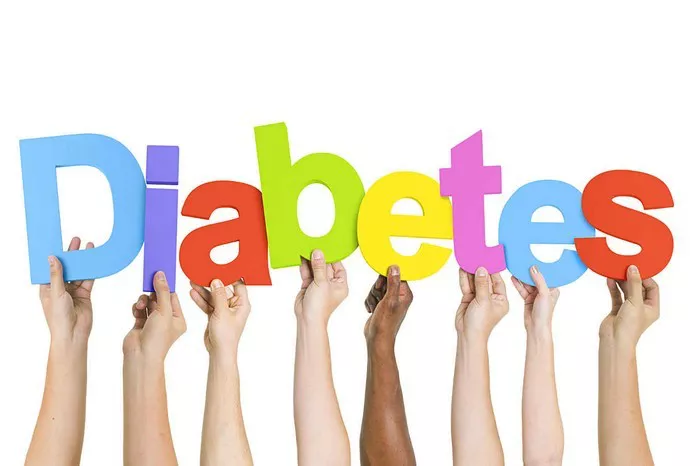Juvenile diabetes, also known as type 1 diabetes, is a chronic condition that typically manifests during childhood or adolescence. It occurs when the pancreas produces little to no insulin, a hormone essential for regulating blood glucose levels. Unlike type 2 diabetes, which is often linked to lifestyle factors, type 1 diabetes is an autoimmune condition in which the body’s immune system mistakenly attacks the insulin-producing beta cells in the pancreas. Recognizing the warning signs of juvenile diabetes is crucial for early diagnosis and management, which can prevent serious complications and improve quality of life.
Understanding Juvenile Diabetes
Before delving into the warning signs, it is important to understand what juvenile diabetes is and how it affects the body. Type 1 diabetes is characterized by an absolute deficiency of insulin, which means the body is unable to regulate blood sugar levels effectively. Without insulin, glucose accumulates in the bloodstream, leading to hyperglycemia (high blood sugar). Over time, this can result in a range of acute and long-term complications if left untreated.
Juvenile diabetes is a lifelong condition that requires continuous management. Children and adolescents diagnosed with type 1 diabetes must monitor their blood glucose levels regularly, administer insulin, and maintain a balanced diet and active lifestyle to keep their blood sugar within a healthy range. Early detection of the condition is vital, as untreated diabetes can lead to life-threatening situations such as diabetic ketoacidosis (DKA), a severe complication where the body starts breaking down fat for energy, producing toxic acids known as ketones.
The Importance of Early Diagnosis
Early diagnosis of juvenile diabetes is critical for several reasons. First, it allows for timely intervention, which can help stabilize blood sugar levels and prevent the onset of severe symptoms. Second, early treatment can reduce the risk of acute complications such as diabetic ketoacidosis, which can be life-threatening. Finally, early management of type 1 diabetes can improve long-term outcomes by minimizing the risk of chronic complications such as cardiovascular disease, neuropathy, and retinopathy.
Recognizing the warning signs of juvenile diabetes is the first step toward early diagnosis. Parents, caregivers, teachers, and healthcare providers should be aware of these signs, especially in children who are at higher risk due to a family history of diabetes or other autoimmune conditions.
Common Warning Signs of Juvenile Diabetes
Increased Thirst (Polydipsia)
One of the earliest and most common signs of juvenile diabetes is increased thirst, also known as polydipsia. Children with undiagnosed diabetes often feel excessively thirsty because their bodies are trying to dilute the high levels of glucose in the blood. As a result, they may drink large amounts of water or other fluids, sometimes even waking up at night to drink.
Why It Happens: The kidneys normally filter excess glucose out of the blood and excrete it in the urine. However, when blood glucose levels are extremely high, the kidneys cannot keep up, leading to the loss of large amounts of fluid through urination. This fluid loss triggers the sensation of thirst as the body attempts to rehydrate itself.
Frequent Urination (Polyuria)
Closely related to increased thirst is frequent urination, or polyuria. Children with juvenile diabetes may need to urinate more often than usual, and the volume of urine may be larger than normal. This symptom is particularly noticeable at night, with some children experiencing bedwetting (nocturnal enuresis) even if they were previously dry at night.
Why It Happens: As mentioned earlier, the kidneys work to remove excess glucose from the blood by excreting it in the urine. The presence of high glucose levels in the urine draws water from the body, leading to increased urine production. This process can lead to dehydration if the fluid loss is not adequately replaced.
Extreme Hunger (Polyphagia)
Children with juvenile diabetes may experience extreme hunger, known as polyphagia, even after eating large amounts of food. Despite their increased appetite, they may lose weight or fail to gain weight at a normal rate.
Why It Happens: The body’s cells rely on glucose for energy. In type 1 diabetes, the lack of insulin prevents glucose from entering the cells, leaving them starved for energy. As a result, the body sends signals to the brain indicating hunger, prompting the child to eat more. However, without insulin, the glucose from food cannot be utilized effectively, leading to persistent hunger.
Unexplained Weight Loss
Unexplained weight loss is a significant warning sign of juvenile diabetes, especially if it occurs despite an increase in appetite. Weight loss in children with diabetes can be rapid and noticeable, often leading to concern among parents and caregivers.
Why It Happens: When the body is unable to use glucose for energy, it begins to break down fat and muscle tissue as an alternative source of fuel. This process leads to weight loss, even though the child may be eating more than usual. The loss of fat and muscle mass can result in a gaunt appearance and reduced physical strength.
Fatigue and Weakness
Children with undiagnosed diabetes often feel unusually tired and weak, even after getting adequate rest. This fatigue can affect their ability to concentrate in school, participate in physical activities, and engage in daily routines.
Why It Happens: The body’s inability to use glucose for energy results in a lack of fuel for the cells, leading to feelings of fatigue and weakness. Additionally, dehydration from frequent urination can exacerbate these symptoms, making the child feel even more drained.
Irritability and Mood Changes
Irritability, mood swings, and behavioral changes are common in children with juvenile diabetes. They may become more easily frustrated, anxious, or depressed, which can affect their relationships with family and friends.
Why It Happens: Fluctuating blood glucose levels can impact brain function, leading to changes in mood and behavior. High blood sugar (hyperglycemia) can cause irritability and restlessness, while low blood sugar (hypoglycemia) can lead to confusion and anxiety. The physical discomfort associated with untreated diabetes can also contribute to emotional distress.
Blurred Vision
Blurred vision is another warning sign of juvenile diabetes. Children may complain of difficulty seeing clearly or may squint or rub their eyes frequently.
Why It Happens: High blood sugar levels can cause the lens of the eye to swell, leading to changes in vision. When glucose levels are consistently high, the lens retains more water, altering its shape and affecting the child’s ability to focus. This symptom may fluctuate as blood sugar levels rise and fall.
Slow-Healing Sores or Frequent Infections
Children with undiagnosed diabetes may experience slow healing of cuts, bruises, or sores. They may also be more prone to infections, particularly in the skin, gums, and urinary tract.
Why It Happens: High blood sugar levels can impair the body’s immune system, making it less effective at fighting infections and healing wounds. Additionally, high glucose levels provide an environment that promotes the growth of bacteria and fungi, leading to more frequent infections.
Fruity-Scented Breath
A fruity or sweet odor on the breath is a less common but important warning sign of juvenile diabetes. This symptom is often associated with diabetic ketoacidosis (DKA), a serious complication that requires immediate medical attention.
Why It Happens: When the body cannot use glucose for energy, it begins to break down fat, producing ketones as a byproduct. High levels of ketones in the blood can lead to ketoacidosis, which causes the breath to take on a fruity scent. This is a sign of a medical emergency and should prompt immediate action.
Nausea and Vomiting
Nausea and vomiting, along with abdominal pain, can be symptoms of diabetic ketoacidosis (DKA), a life-threatening condition that can develop in children with undiagnosed or poorly managed type 1 diabetes.
Why It Happens: As ketones accumulate in the blood, they can cause the blood to become more acidic, leading to symptoms such as nausea, vomiting, and abdominal pain. DKA is a medical emergency that requires prompt treatment with insulin and fluids.
Risk Factors for Juvenile Diabetes
While the exact cause of juvenile diabetes is not fully understood, several risk factors may increase a child’s likelihood of developing the condition. These include:
Genetics: A family history of type 1 diabetes or other autoimmune conditions increases the risk.
Autoimmune Factors: Children with other autoimmune diseases, such as celiac disease or autoimmune thyroiditis, are at higher risk.
Environmental Triggers: Certain viral infections and other environmental factors may trigger the autoimmune response that leads to type 1 diabetes.
Age: Juvenile diabetes can occur at any age but is most commonly diagnosed in children between the ages of 4 and 14.
When to Seek Medical Attention
If a child exhibits any of the warning signs of juvenile diabetes, it is important to seek medical attention promptly. Early diagnosis and treatment can prevent serious complications and improve the child’s quality of life. A healthcare provider will likely perform blood tests to measure glucose levels and check for the presence of autoantibodies, which are markers of type 1 diabetes.
Diagnosis and Management
Once juvenile diabetes is diagnosed, a comprehensive management plan is essential. This plan typically includes:
Insulin Therapy: Children with type 1 diabetes require insulin injections or an insulin pump to regulate blood sugar levels.
Blood Glucose Monitoring: Regular monitoring of blood glucose levels is crucial for adjusting insulin doses and preventing both hyperglycemia and hypoglycemia.
Diet and Exercise: A balanced diet and regular physical activity are important components of diabetes management. Children should work with a dietitian to develop a meal plan that meets their nutritional needs while managing blood sugar levels.
Education and Support: Education about diabetes is essential for both the child and their family. Support from healthcare providers, diabetes educators, and peer support groups can help families navigate the challenges of managing juvenile diabetes.
See also: What Hormone Causes Hypoglycemia?
Conclusion
Juvenile diabetes is a serious and lifelong condition, but with early diagnosis and proper management, children with type 1 diabetes can lead healthy and fulfilling lives. Recognizing the warning signs of juvenile diabetes is the first step in ensuring timely intervention and reducing the risk of complications. Parents, caregivers, and healthcare providers must remain vigilant and seek medical attention if any of these signs are present. With the right care and support, children with juvenile diabetes can thrive and achieve their full potential.
Related topics:
What Type of Diabetes is Caused by Obesity


























